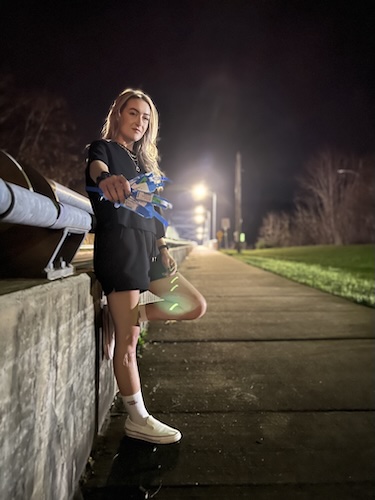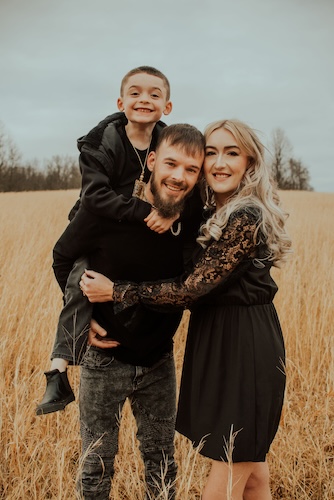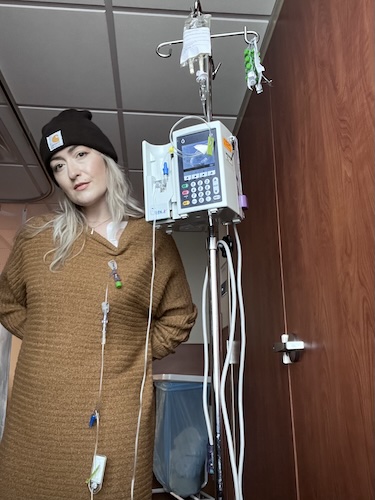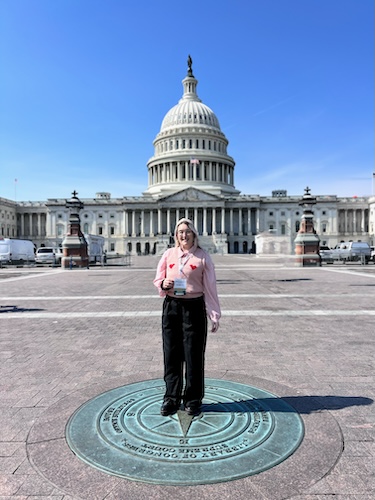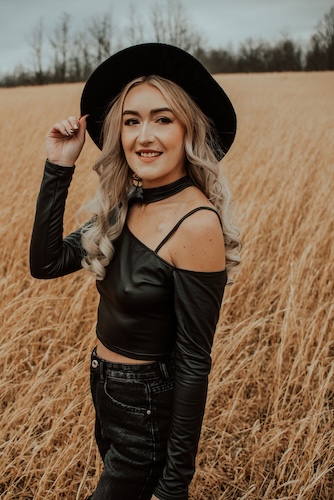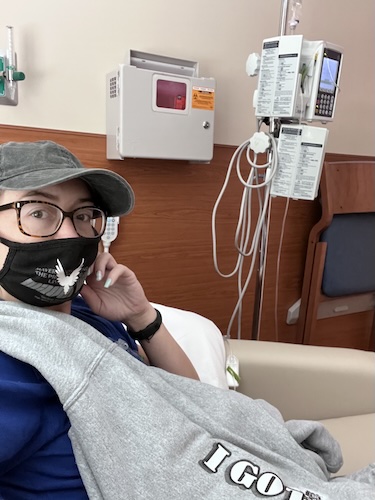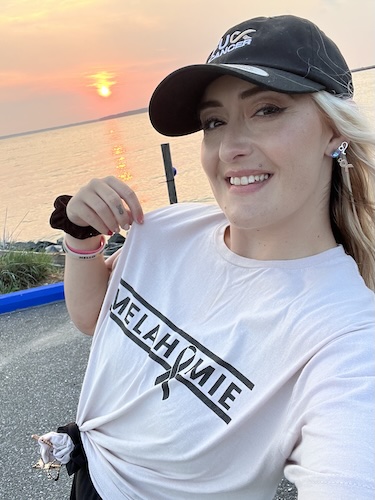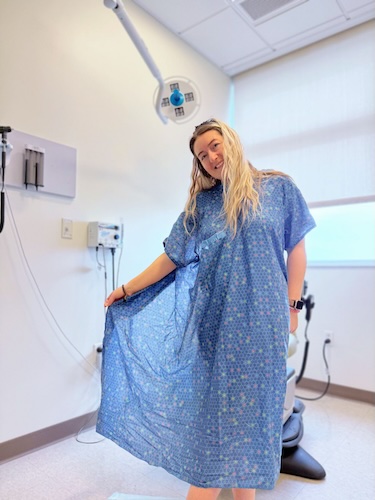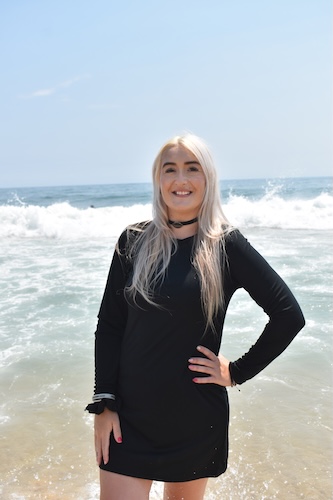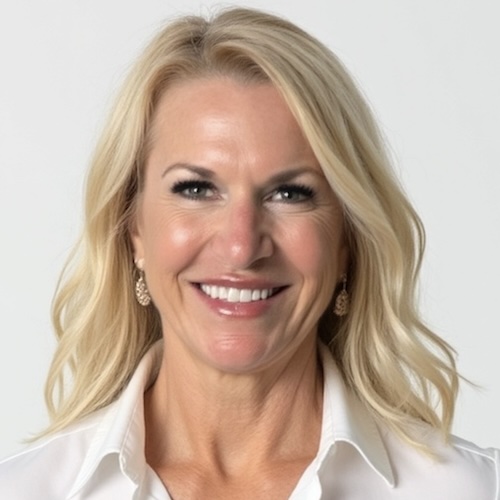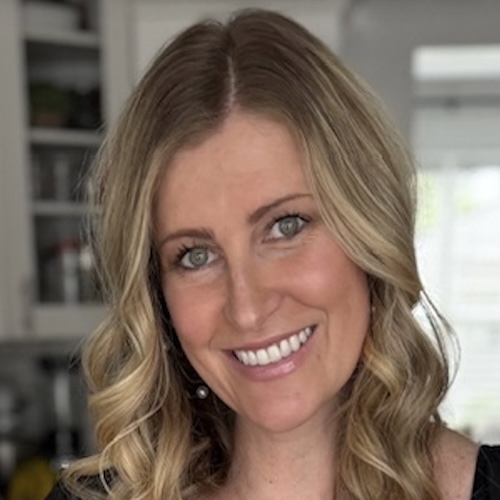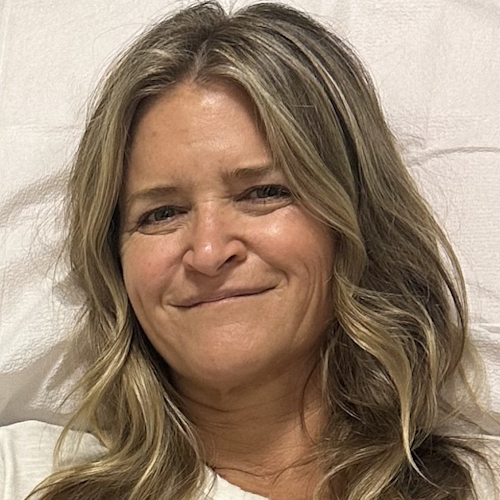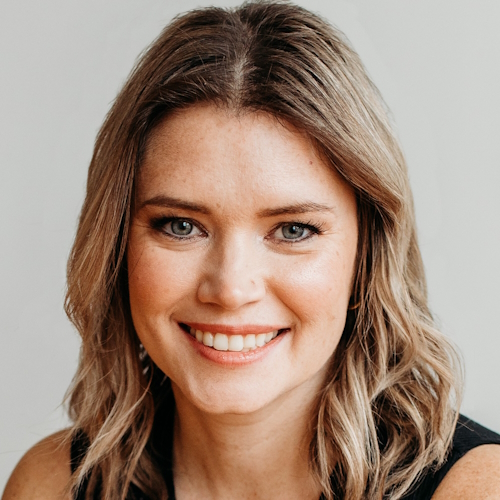From a Tanning Obsession to Stage 3A Melanoma: Brittanny’s Unexpected Skin Cancer Experience
Brittanny’s experience with stage 3A melanoma is eye‑opening and deeply relatable. Growing up in a small town where she loved dance, cheerleading, and soaking up the sun, Brittanny never imagined that a simple mole could change her life. In 2021, at only 27, she was diagnosed with stage 3A melanoma. She had no real warning signs aside from a growing, dry, and ugly mole on her shin. She felt tired at times, but as a young mom raising a family during the COVID-19 pandemic, she dismissed it. Her yearly skin checks were routine until one missed appointment in 2020 led to a life‑altering discovery the next year.
Interviewed by: Taylor Scheib
Edited by: Chris Sanchez & Jeff Forslund
The diagnosis didn’t hit immediately. Brittanny didn’t even know what melanoma was when her dermatologist first said the term. It only sank in when her oncologist calmly explained the seriousness: this was skin cancer that could spread internally, and she needed surgery and a PET scan. Having a young son at home and hopes of growing their family made the news even more devastating.
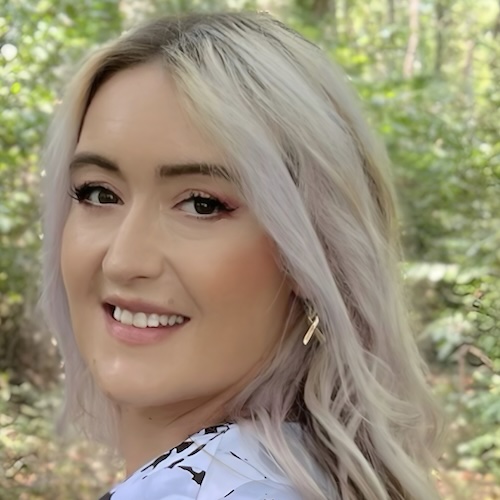
Brittanny’s treatment involved surgeries and a year of immunotherapy. The medication taught her immune system to recognize and respond to melanoma cells, but it came with digestive side effects and a permanent change in how her stomach feels. Still, she focuses on being alive and present with her family. Today, her follow‑ups are down to once a year, and she finally feels free to live summers without needing to work around appointments.
Through this experience, Brittanny discovered her purpose. She now advocates for skin cancer awareness and speaks openly to lawmakers about the importance of cancer research funding. She wants people to understand that melanoma can be deadly. Skin cancer, of any type, should never be minimized, despite being the most common form of cancer. She supports others facing a similar diagnosis, reminding them that their lives and stories matter.
Watch Brittanny’s video and read the transcript of her interview for more about her story.
- How she didn’t think she had any symptoms until a simple mole changed her life
- A young mom discovers her tan addiction could have heavy consequences
- From cheerleader to cancer advocate: how melanoma gave Brittanny a new purpose
- What happens when a mole on your shin becomes stage 3A melanoma
- Brittany never thought skin cancer could be serious, until it nearly took everything
- Name: Brittanny G.
- Diagnosis:
- Skin Cancer (Melanoma)
- Age at Diagnosis:
- 27
- Staging:
- Stage 3A
- Symptoms:
- Mole that enlarged, changed shape, and became dry, patchy, and flaky
- Fatigue
- Treatments:
- Surgeries: wide local excision, lymphadenectomy
- Immunotherapy
This interview has been edited for clarity and length. This is not medical advice. Please consult with your healthcare provider to make informed treatment decisions.
The views and opinions expressed in this interview do not necessarily reflect those of The Patient Story.
My name is Brittanny
I was diagnosed with stage 3A melanoma, skin cancer, in 2021.
I grew up in a very, very small town. My mom put me in dance when I was three years old. And then I was a cheerleader in school. So my earliest memories are of growing up and being a little girly girl. I loved dressing up. I loved being on camera.
I only had one symptom
What disturbs me so much is that nothing was indicating that I was sick. I did not realize that I ever had cancer until I went to the dermatologist and they told me. And it took me being diagnosed with cancer and having all the surgeries and getting to the point where I had to comprehend how serious melanoma was, which took months into my diagnosis.
I had to look back and really dig to see if there was anything that could have told me that I had cancer. And the only thing that I can think of is maybe I was a little bit more tired than usual. But again, I was a young mom. My son Jackson was five or six. He was just finishing up his first year of school. We were in a pandemic. So all these things were changing in my life.
There was nothing that made me think, “Oh yeah, I have cancer,” other than the fact that, of course, I had a mole on my leg that was growing, and it was huge and it was ugly. But I didn’t feel sick. I didn’t look sick. Nothing.
The path to my diagnosis
I’ve told this story many times. I had been going to the dermatologist yearly for a couple of years before my diagnosis, just because I had health insurance and Medicaid. I learned about Medicaid and all that. But through getting Medicaid, I learned that I can have doctor’s appointments of all sorts. I call it my guilty conscience.
One of the first doctor’s appointments I scheduled was a skin check. I had grown up lying in tanning beds and lying in the sun outside. I was obsessed with tanning and being tan. You can even call it addiction. In my youth, my teenage years, I was always outside in the summer. So, long story short, I began to schedule appointments with a dermatologist. I was going to skin checks year after year after year, and getting clean results.
But come 2020, I missed one skin check because of quarantine. And in 2021, I had my yearly skin exam, and that’s when they found it. So it was just terrible timing. Just bad luck and terrible timing, mixed with a guilty conscience. That was the only reason why I even went to a dermatologist to begin with. At some point in time in my life, I had heard that tanning beds cause skin cancer, and of course, I had lain in tanning beds. And so my risk of skin cancer was potentially higher than most people’s. And all of that together, one plus one equals two — I have melanoma now.
So it was on the very front of my shin. I could see it every day. It was in a very easy-to-see spot on my body. It wasn’t like it was on my back, where I couldn’t see it. Right. So that’s a good thing. I saw it growing. I noticed it was ugly. And I also noticed that it was getting dry.
The moment everything changed
It was business as usual. I went in and they said, “Hi, how are you? Is there anything concerning that you want me to look at?” And I said, “I guess this one on my shin.”
Two seconds later, the doctor said, “That’s melanoma.” And I said, “What’s melanoma?” Which is hilarious because I’d been going to skin checks time after time. But I was 27 years old. I can’t emphasize that enough. I’m sure in the past, in every skin check I’d had, I’d been educated on what melanoma was. I’m certain that it went through one ear and out the other, because what 20-year-old thinks they’re going to get cancer? I wasn’t in a state of mind where I was learning what these types of skin cancers are.
I didn’t react to what the doctor said, because I had no idea what melanoma was. I guess it could have been different. If I knew what it was, I might have been like, “Oh, wow, that’s the deadliest form of skin cancer.” I might have started bawling in that moment had I known what melanoma was.
I had to come back the next day to get it biopsied, and they sent it off. It was probably a day or two later that they called back and they confirmed that it really was melanoma, and that I was going to have to schedule an appointment with an oncologist.
When the diagnosis finally hit me
Yeah, I remember that was the first doctor’s appointment that I went to where I cried because she was the one who sat me down and explained everything to me and my partner. That’s the first appointment where I finally broke down and bawled my eyes out, because I finally realized that this was serious and that I was about to have to change my life forever.
The doctor told me that I was going to have a second surgery after my biopsy, a wide local excision that would get bigger margins to try to remove all the cancer cells from my shin. Because I had delayed getting that melanoma checked out for so long, it had potentially spread internally. And that was terrifying because I learned that a simple mole can be cancer, which was just blasphemy to me. How on earth can a mole be cancer? That’s just mind-blowing to me. Secondly, how can it spread internally? All these things were circulating in my brain, and it was just insane.
The doctor also said, “You’re going to have to get a scan called a PET scan, where they put you in a machine. They scan your whole body to see if the cancer has spread internally. It could be anywhere in your body: your brain, your liver, your lymph nodes. And I’m just thinking, “I have a five, going on six-year-old son at home. We’re just starting our family.” We were planning and hoping to expand our family and have more kids. I think that’s the moment when I knew that this was serious.
My treatment plan
They did the wide local excision and a sentinel lymph node biopsy. They found that the melanoma had spread to only one lymph node in my groin, which was excellent news. So they removed that lymph node from my groin. And basically from there, I was cancer-free. Good to go.
My oncologist then recommended immunotherapy treatments. I use the drug called Keytruda. I had 18 rounds of Keytruda every three weeks for an entire year. Keytruda basically teaches your body to fight off the cancer cells. So if the melanoma cancer cells try to return to the body, the immune system would do what it was supposed to do the first time and fight off those cancer cells. However, the downside of Keytruda is that it has some pretty severe side effects, and it can alter you. It changes your immune system. But I’m still alive today because of my immunotherapy. And of course, I’m really happy that I’m still alive.
I got a port installed in my chest. I have a little scar here still. So the hospital took a few vials of blood and sent them off to the blood lab for testing. They then hooked me up to an IV through my port, and I got fluids. It’s like the influencers on Instagram who get vitamins and stuff through IV. It takes about 30 minutes..
The side effects I experienced during treatment
My side effects were mostly digestive issues. I had a lot of stomach pain, a lot of air. I would burp and pass gas a lot. My stomach would also often hurt. It wasn’t to the point where I felt like dying. My stomach felt yucky, pretty much all the time. It wouldn’t ruin my day, though. I could still get up and live my life; I just felt heavy.
Now, my stomach always feels heavy and full, and I have to go to the bathroom a lot more than normal. I have colitis now, so I have episodes of really bad stomach pain. If anybody has colitis, ulcerative colitis, or Crohn’s disease, you probably know what it’s like. I had one pancreas attack that was more because I wasn’t getting help with my colitis sooner. That was like a niche situation. But yeah, it’s mostly stomach issues, which, you know, I can deal with.
I’m alive. That’s the biggest thing. I’m happy to be alive, and I’m not dealing with melanoma. I’ll take it.
What my follow-up appointments look like now
It was pretty hefty initially afterwards, because I had to go to the doctor every three months for PET scans. And I had my lymph nodes, ultrasounds, and skin checks. But then it went to six months. Now, I’m about I’m three years out and I get checked every 12 months.
I feel like this is the first summer that I’ve actually gotten to live. I got to go on three vacations that I didn’t have to schedule around doctors’ appointments. I’ve actually enjoyed myself and felt free.
At the back of my mind, though, I’m always afraid, because melanoma has a high chance of recurrence. And that’s my reality. So every day that I live, in some sick way, is one day closer to the day it’s likely going to recur.
But I am just trying to keep my spirits up and enjoy every single day.
What cancer showed me
I feel like I have so much more purpose now.
Before, I was living, but I wasn’t living with much of a purpose. I was just kind of here, doing what I was supposed to do, getting up, going to work, raising my family, and so on. And now I have purpose.
It’s not like I don’t have bad days. I still have bad days all the time. We’re always going to have bad days. But even during my bad days, you know what? It’s fine, because I’m alive and I get to live those days, and I’ll do better tomorrow
I really hate cancer, don’t get me wrong, but I love the fact that I get to advocate for cancer now and use my voice to help people who are going to be diagnosed with cancer today or tomorrow or next year, as well as those who have already been diagnosed with cancer.
I never had a purpose before cancer. I didn’t know what I wanted to do with my life. And now that this thing was thrown at me, I’m able to use it for good. I just went to Washington, DC, and got to talk to my senators and my congressman about how it is so important that we keep funding cancer research, because I literally would not be alive today if immunotherapy didn’t exist.
It’s just so fun to use this for good. And I don’t know, it just makes me happy.
What I want others to know
The biggest thing is that skin cancer is serious. It’s really sad to me. And something I never thought that I would deal with after being diagnosed with melanoma is the number of people who, after I tell them I had skin cancer, would go, “Oh, you’re fine. It’s not serious.” I never thought that I would be diagnosed with cancer and then have to defend myself that my cancer or my type of cancer is serious and could actually kill me.
So I just want people to genuinely take it seriously and quit minimizing people out there in the world who are dealing with skin cancer every day. Just because it [skin cancer] is the most common form of cancer does not mean that it’s the least serious form of cancer. And I feel like that’s what we have to deal with so much. And it’s really sad, and it hurts us all.

Inspired by Brittanny's story?
Share your story, too!
More Melanoma Stories
Brittanny G., Skin Cancer (Melanoma), Stage 3A
Symptoms: Mole that enlarged, changed shape, and became dry, patchy, and flaky, fatigue
Treatments: Surgeries (wide local excision, lymphadenectomy), immunotherapy
...
Teresa B., Recurrent Breast Cancer (Hormone-Positive), Oral Cancer (Lip Cancer), and Skin Cancer (Melanoma)
Symptoms: Lip cancer: chapped lips & a pimple-like growth on lip, breast cancer: enlarged left breast with lump, melanoma: none
Treatments: Surgeries (bilateral mastectomy with reconstruction, lumpectomy, craniotomy, Mohs, surgery, wide local excision), hormone therapy, radiation therapy
...
Jennifer M., Melanoma, Stage 4 (Metastatic)
Symptom: Persistent cough, body and chest aches and pains, night sweats, fatigue
Treatments: Immunotherapy, surgeries (lung resection, pericardiectomy)
...
Cheyenne E., Melanoma, Stage 3B
Symptom: Itchy mole on her back that changed in appearance
Treatments: Surgeries (wide local excision, sentinel lymph node biopsy, lymph node removal), immunotherapy
...
Robin A., Melanoma, Stage 4
Symptom: Appearance of a small bump on the chest
Treatments: Chemotherapy and immunotherapy (under a clinical trial)
...
Megan S., Melanoma, Recurrent (Stage 1A & Stage 4)
Symptoms: New mole, cough, wheezing, chest pain, back pain
Treatments: Surgeries (mole excision, reconstructive surgery, thoracic surgery), immunotherapy, targeted therapy (BRAF inhibitors, MEK inhibitors), radiation therapy
...
